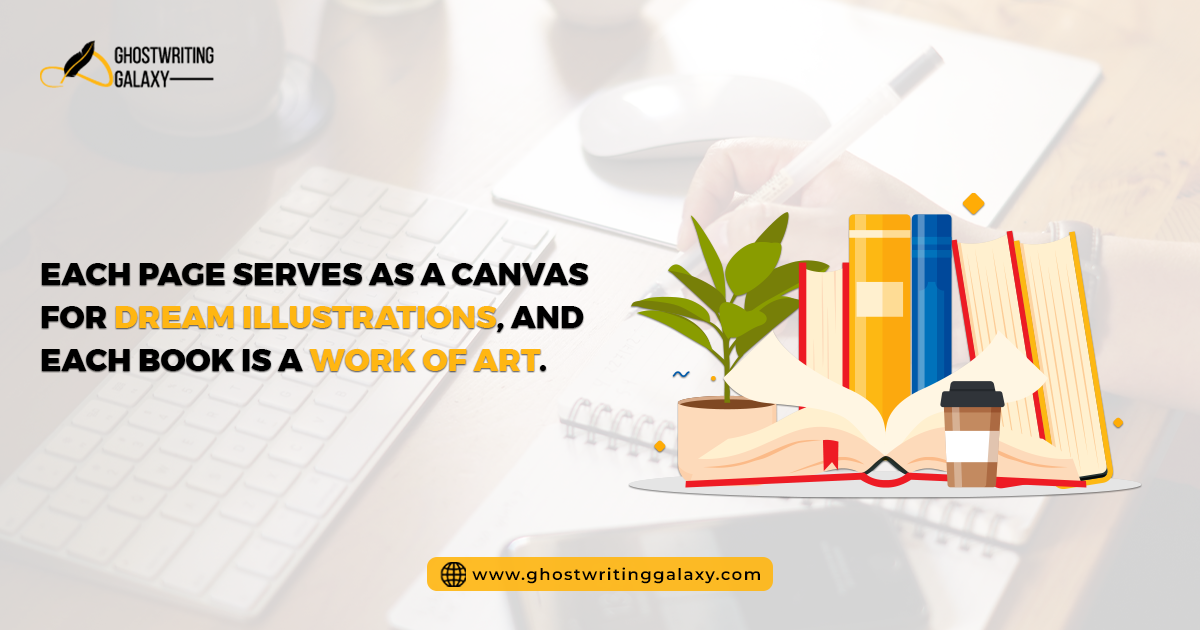In the realm of literature, each page is not merely a blank canvas awaiting words; it is a gateway to boundless imagination, a canvas for dream illustrations, and a work of art in itself. At the heart of every beautifully crafted book lies the intricate art of storytelling, where authors wield words as brushes, painting vibrant narratives that captivate hearts and ignite minds.
Storytelling holds the power to transport readers to different worlds, evoke profound emotions, and inspire transformative thought. With each turn of the page, authors have the opportunity to paint vivid landscapes with their words, breathing life into characters, settings, and emotions that come alive in the reader’s mind. Whether it’s the sweeping vistas of a fantastical realm, the bustling streets of a historical city, or the intimate musings of a complex character, each page serves as a canvas for the author’s imagination to flourish.
The true artistry of storytelling lies in the ability to create immersive experiences that resonate with readers on a deep, emotional level. Through carefully crafted descriptions, masterful character development, and intricate plot lines, authors invite readers to become active participants in the story, experiencing the triumphs and tribulations of the characters as if they were their own. This emotional connection is what separates great storytelling from mere words on a page, transforming books into living, breathing worlds that linger in the reader’s mind long after the final chapter has been read.
Yet the artistry of storytelling extends far beyond the words on the page, encompassing the design and presentation of the book itself. From the captivating cover art to the thoughtful layout of the text, every element plays a crucial role in enhancing the reader’s experience and bringing the story to life. A meticulously crafted book not only invites readers to explore its contents but also reflects the care and attention to detail that went into its creation, becoming a work of art in its own right.
The cover design, for instance, serves as the initial canvas upon which the story’s essence is captured. A compelling cover art can pique the reader’s curiosity, hint at the narrative’s tone, and set the stage for the journey that lies within. The choice of fonts, layout, and imagery all contribute to the book’s overall aesthetic, creating a harmonious visual experience that complements the written word.
Moreover, the art of storytelling transcends the boundaries of traditional print books, finding expression in various formats, including eBooks, audiobooks, softcovers, and hardcovers. Each format offers its own unique canvas for storytelling, catering to diverse preferences and lifestyles. eBooks provide convenience and accessibility, allowing readers to carry entire libraries in their pocket and seamlessly integrate reading into their daily routines. Audiobooks, on the other hand, offer a hands-free listening experience, perfect for multitasking or on-the-go entertainment, bringing stories to life through the emotive power of the narrator’s voice.
Softcovers and hardcovers, however, invite readers to savor the tactile and immersive experience of turning pages, creating a deeper connection with the story. The weight of the book in one’s hands, the gentle rustle of the pages, and the subtle scent of ink and paper all contribute to a multi-sensory reading experience that cannot be replicated in digital formats. These tangible books become cherished objects, adorning shelves and serving as physical reminders of the journeys they have taken readers on.
At its core, each page of a book is a canvas waiting to be filled with stories, ideas, and emotions. The art of storytelling transforms these blank canvases into masterpieces that transcend time and space, leaving an indelible mark on readers long after they’ve turned the final page. Authors, like skilled artists, carefully select their words, weaving them together to create narratives that not only entertain but also challenge, inspire, and provoke thought.
Through their storytelling prowess, authors have the power to shape perceptions, spark conversations, and even influence societal change. A well-crafted story can shed light on societal issues, offer new perspectives on complex topics, and foster empathy and understanding among readers from diverse backgrounds. In this way, storytelling becomes not just an art form but a powerful tool for communication, education, and personal growth.
Whether you’re an author, a reader, or simply a lover of stories, take a moment to appreciate the beauty and artistry of each page and the worlds they hold within – for it is in these pages that the true magic of storytelling resides. Embrace the journey, allow yourself to be swept away by the narrative, and revel in the wonder of the written word, for in the end, it is the art of storytelling that weaves the fabric of our shared human experience.



